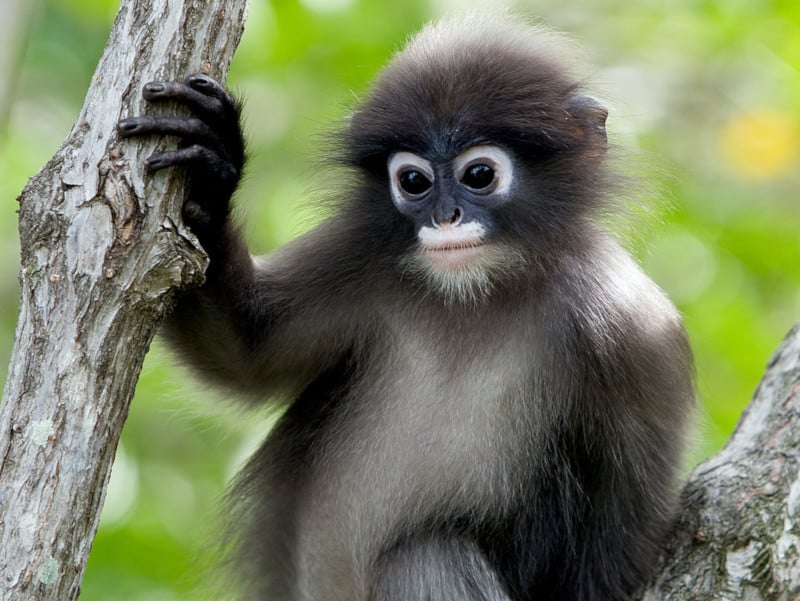
Silvery Lutung Facts
- Firstly, the Silvery Lutung remains a truly remarkable species classified in the genus Trachypithecus. This remarkable animal qualifies as a member of one of the groups of Old World monkeys.
- Rather surprisingly, it has a unique developmental pattern, compared to related species. That’s because, as infants, the fur of this fascinating animal typically shows a golden yellow in color.
- Furthermore, it has developed a cooperative approach to parenting. Due to this, the mother of a newborn Silvery Lutung shares the duties of raising the infant with other females of the group she forms part of.
- In addition, this animal typically reaches physical and sexual maturity within a span of 4-5 years. Finally, it also possesses a typical life expectancy in the wild measuring about 20 years.
Related Articles
Silvery Lutung Physical Description
Most notably, the Silvery Lutung ranks as an average-sized monkey. However, its general physique develops as quite slim, compared to similar animals. But, it does possess a comparatively long tail.
Additionally, the awesome simian does display a slight degree of sexual dimorphism. In this, it follows the pattern of the majority of simians. In its case, males attain a slightly larger size than females.
Head and body lengths for females average about 18 – 20 in (46 – 51 cm). Meanwhile, males reach a length averaging 26 – 30 in (67 – 75 cm). Furthermore, weights for females average 13 lb (5.7 kg), while males average 15 lb (6.6 kg).
Also, its coloring primarily consists of either black or dark brown fur. Yet, parts of this is tipped with gray, giving it a silvery appearance. In addition, females occasionally develop small spots of whitish hair around the groin.
- Kingdom: Animalia
- Phylum: Chordata
- Class: Mammalia
- Order: Primates
- Family: Cercopithicidae
- Genus: Tracypithecus
- Species: P. cristatus
Silvery Lutung Distribution, Habitat, and Ecology
First of all, the endemic range of the stunning Silvery Lutung only consists of two known regions. One portion of this range includes southern India and Sri Lanka. Meanwhile, the other covers much of Southeast Asia.
The animal also primarily prefers to inhabit regions of the rainforest. However, individual specimens occasionally appear in secluded mountain forests as well. Therefore, experts consider it moderately adaptable.
Additionally, this monkey generally spends the majority of the day in the trees. While there, it commonly expertly crawls along the numerous branches. This lovely monkey also occasionally leaps from tree to tree.
The species also remain diurnal in nature and usually appears more active in the mornings and afternoon. The creature usually chooses to live in small groups ranging in size from 5-20 individuals.
Lastly, the monkey evolved as entirely herbivorous, like many others of its kind. As a result of this fact, as well as its native habitat, its diet principally consists of various fruits, leaves, and buds.
Species Sharing Its Range
Check out our other articles on Breathtaking Asian Species, Thorny Dragon, Eye of the Sahara, Pennantia Baylisiana, Spanish Shawl, Pellucid Hawk Moth, Victoria Crowned Pigeon, Tiger Shark
